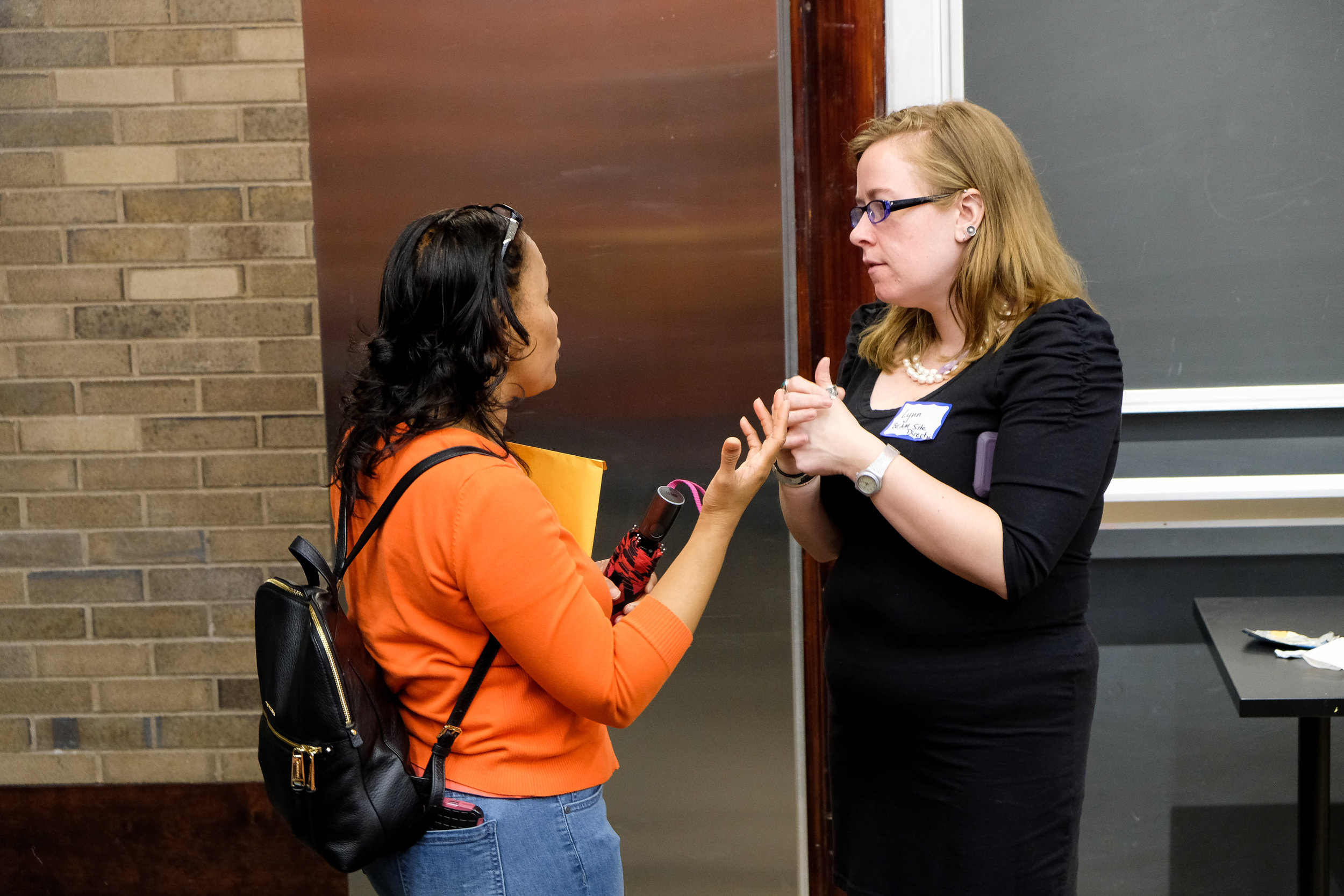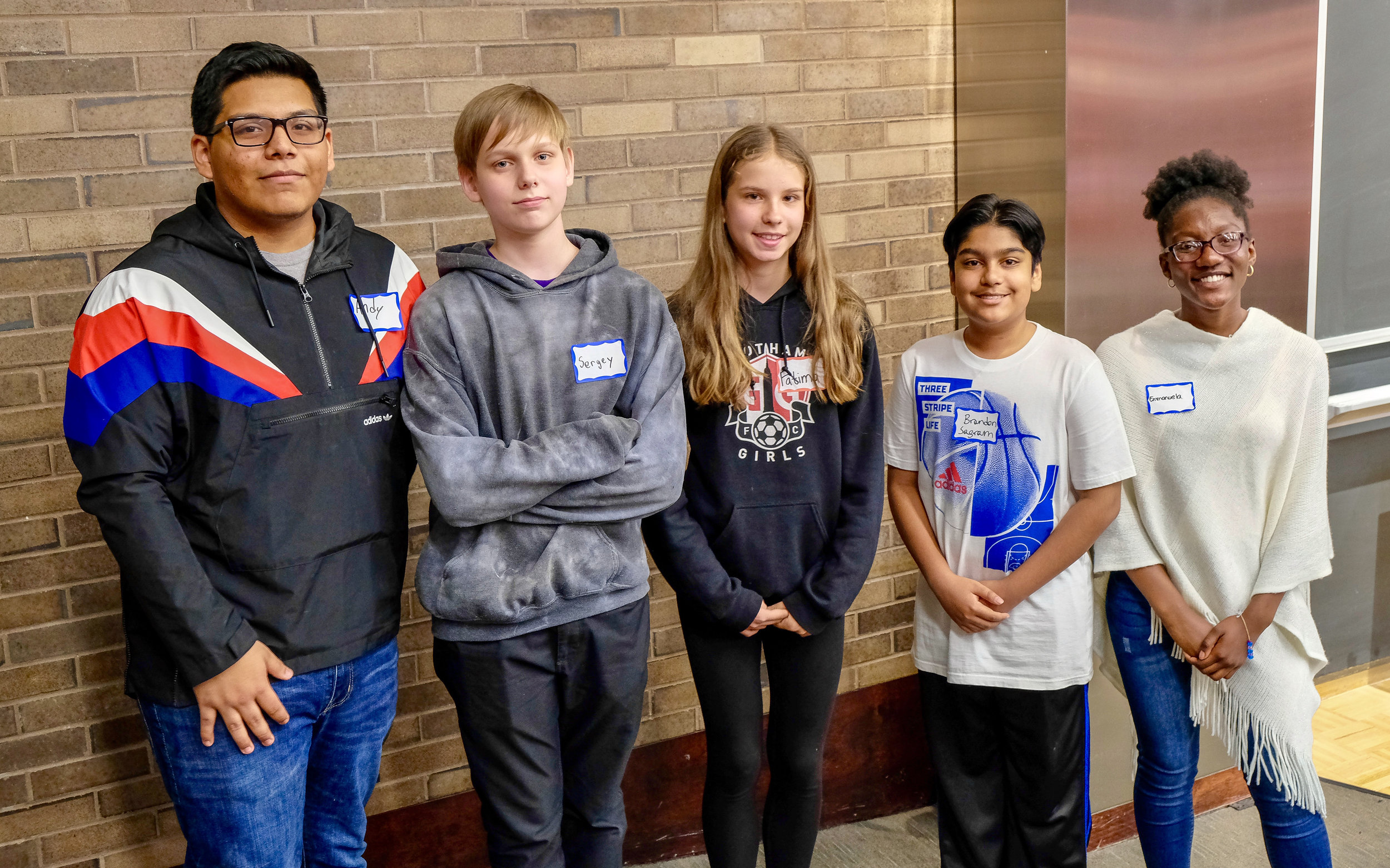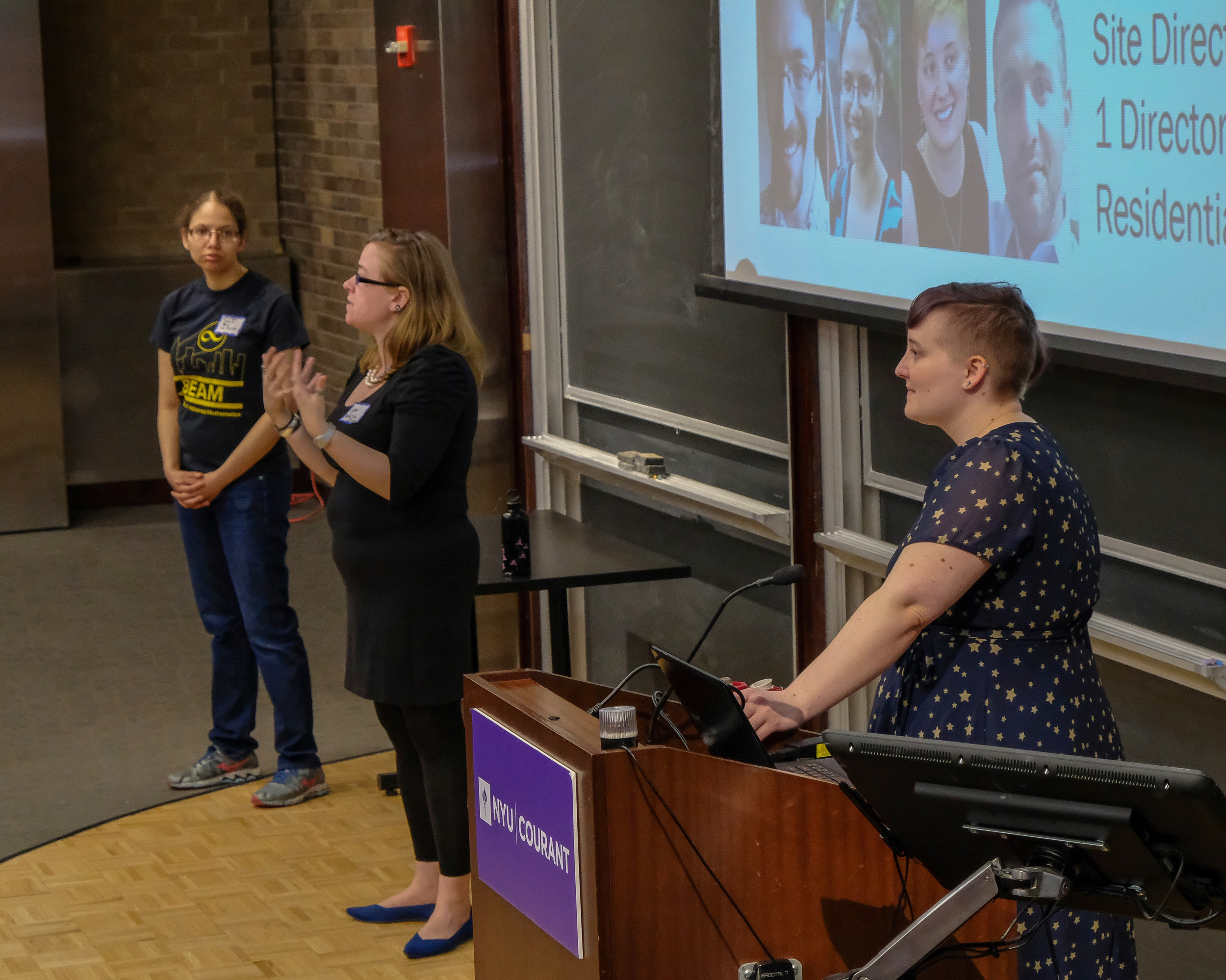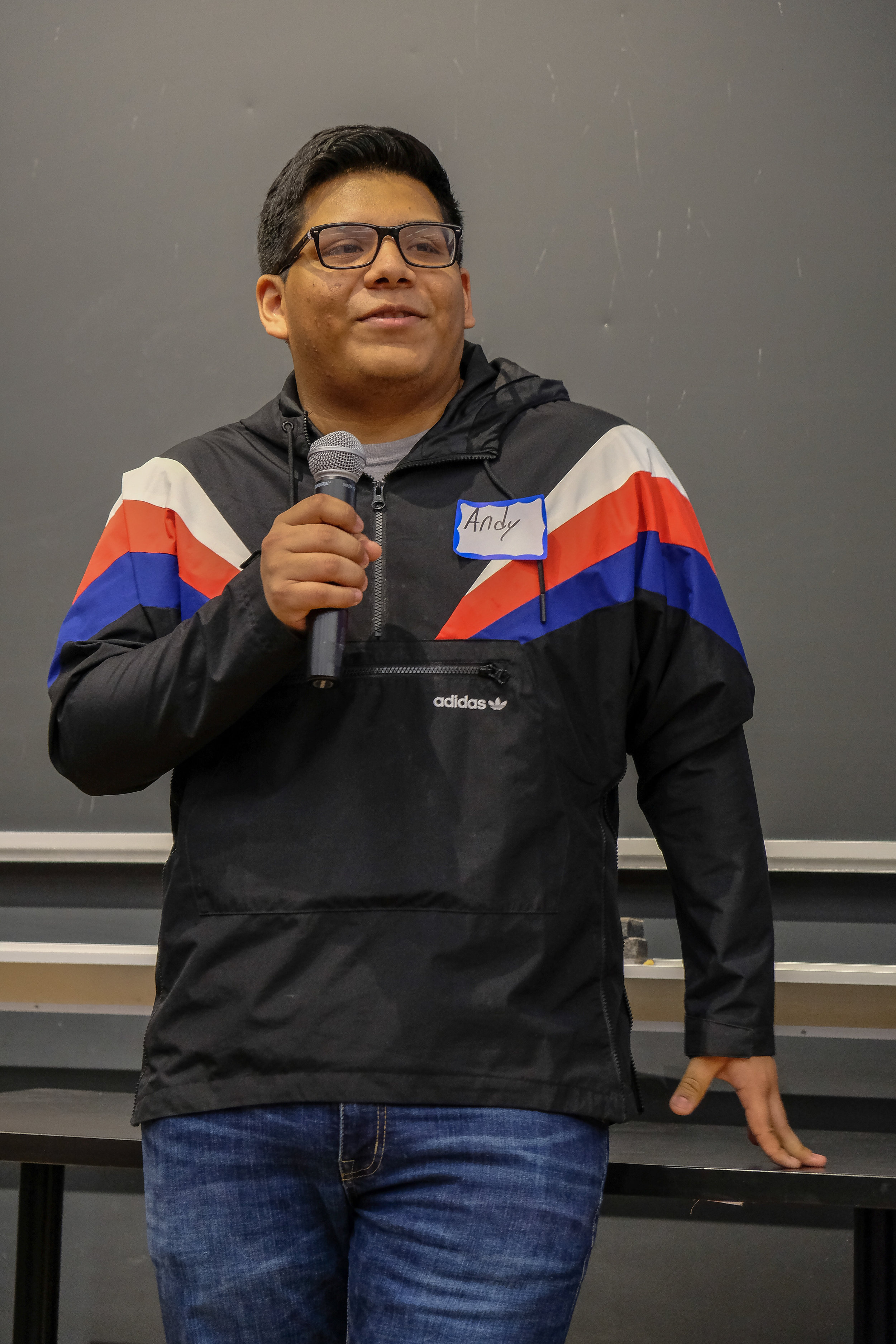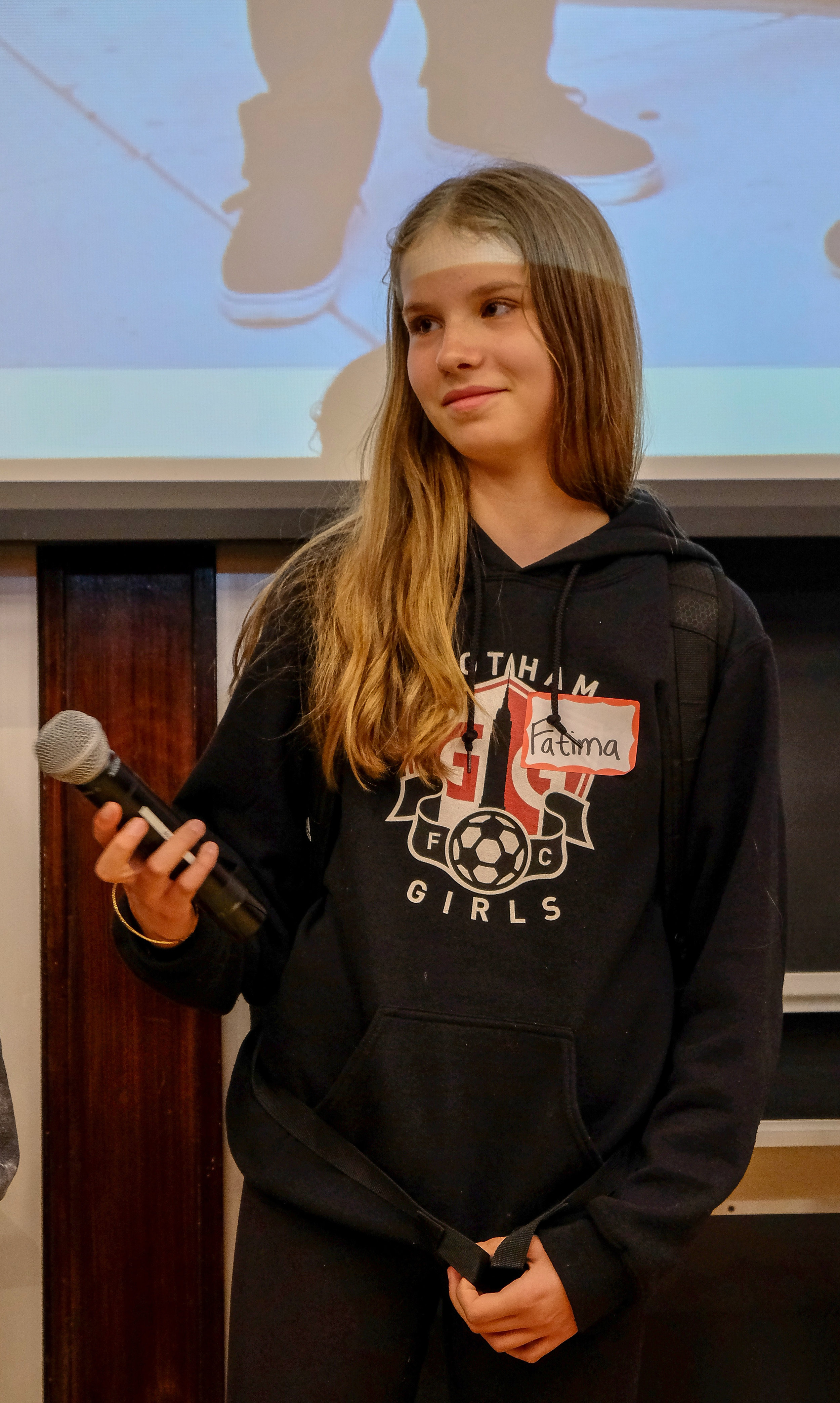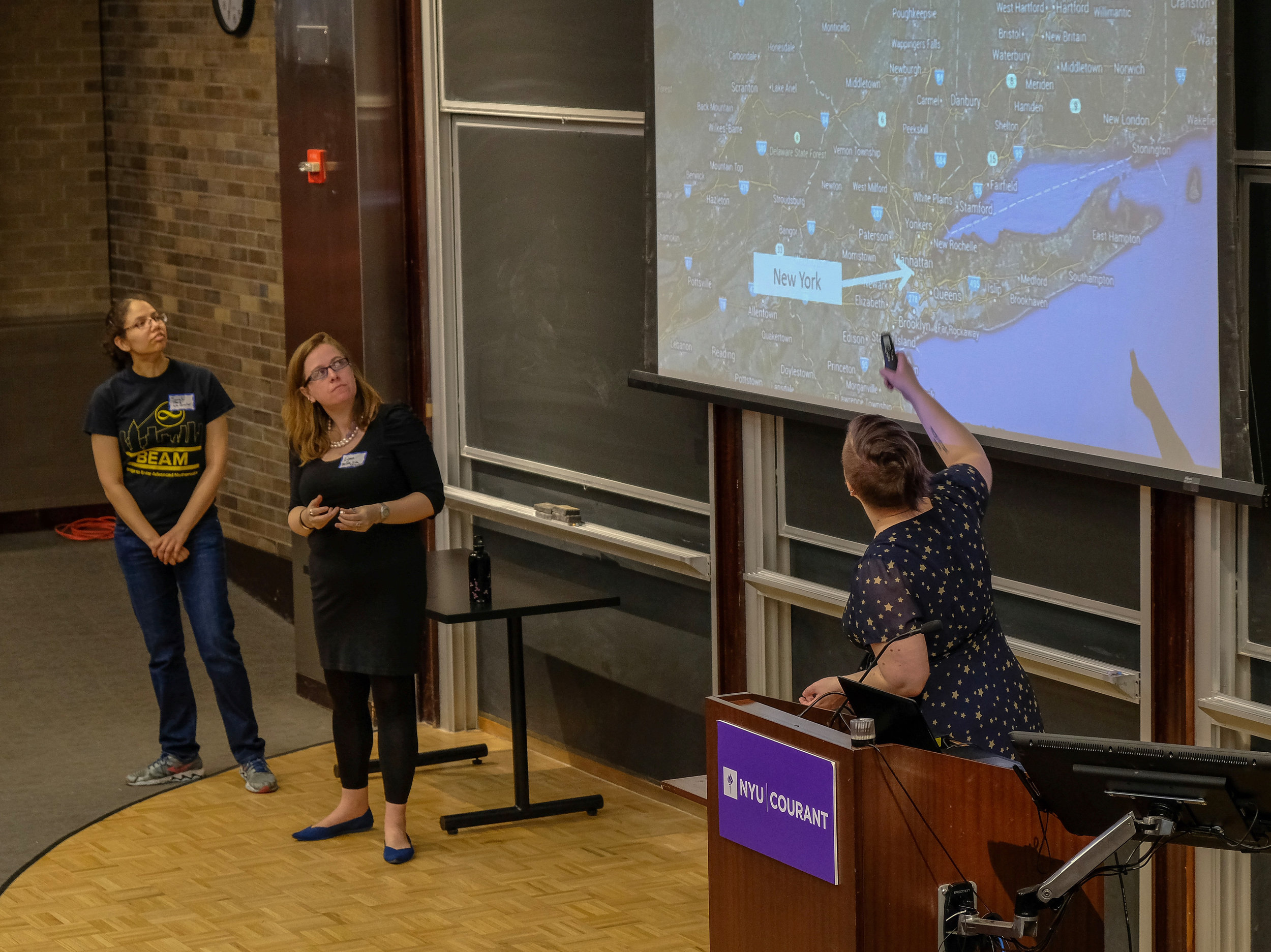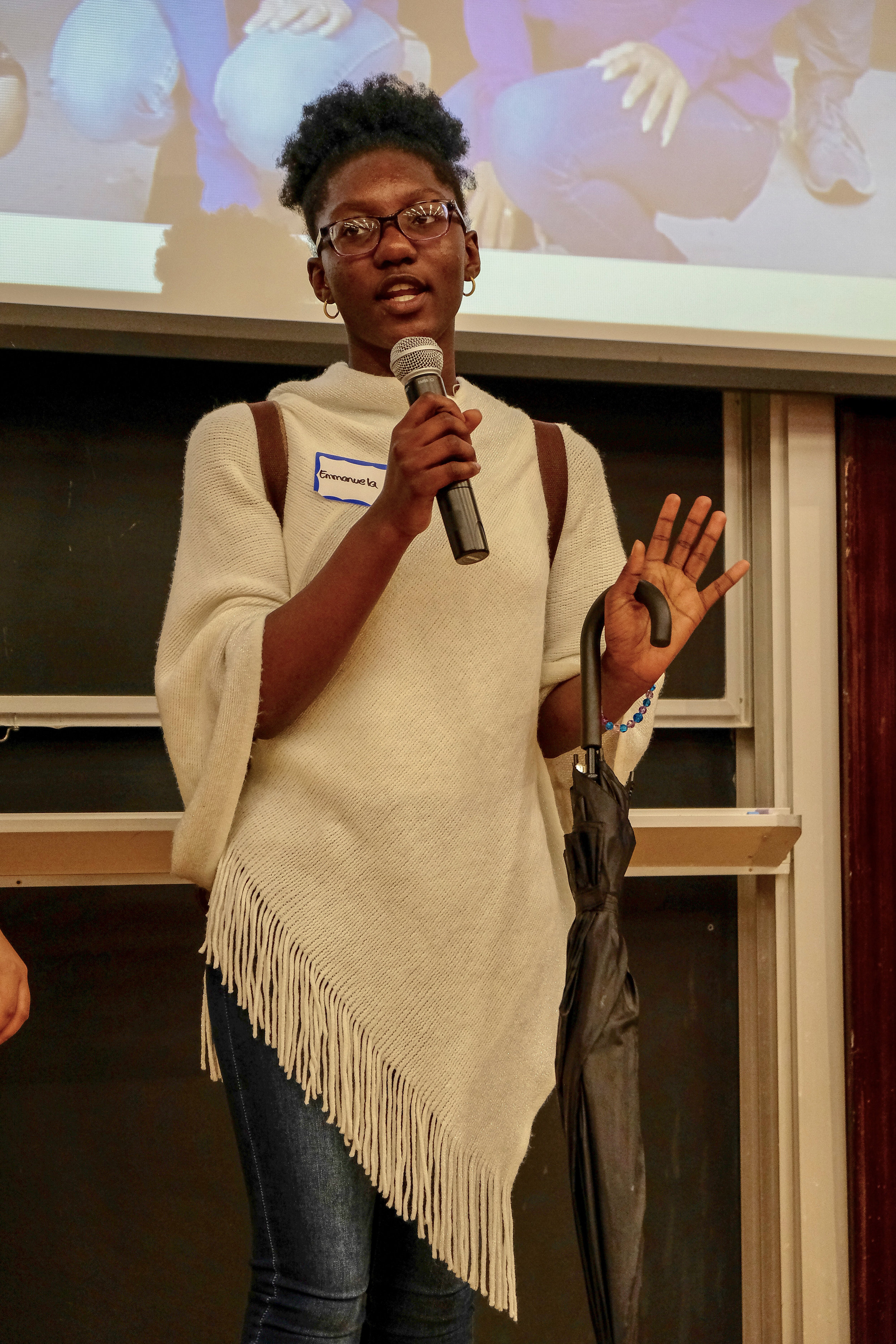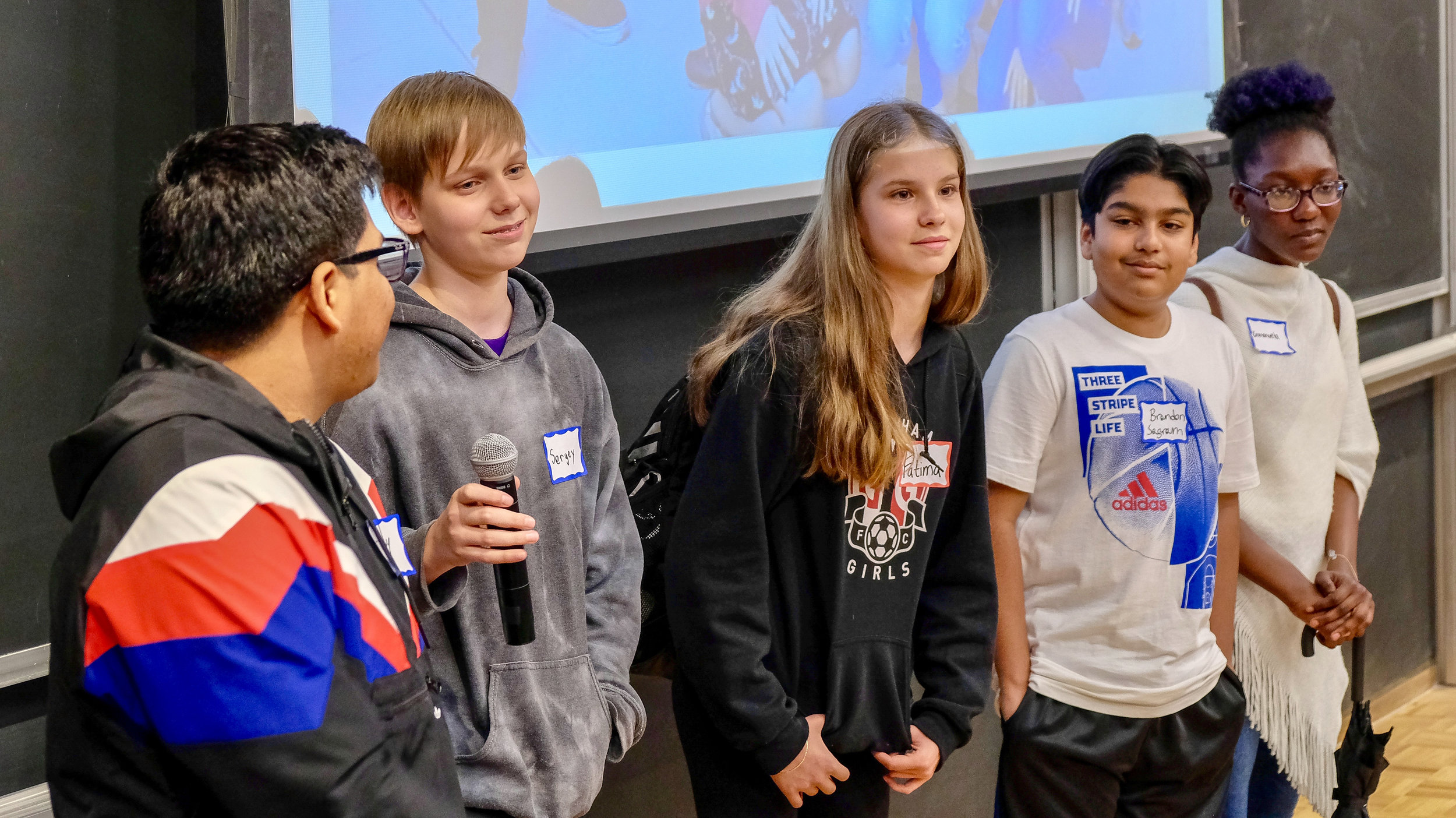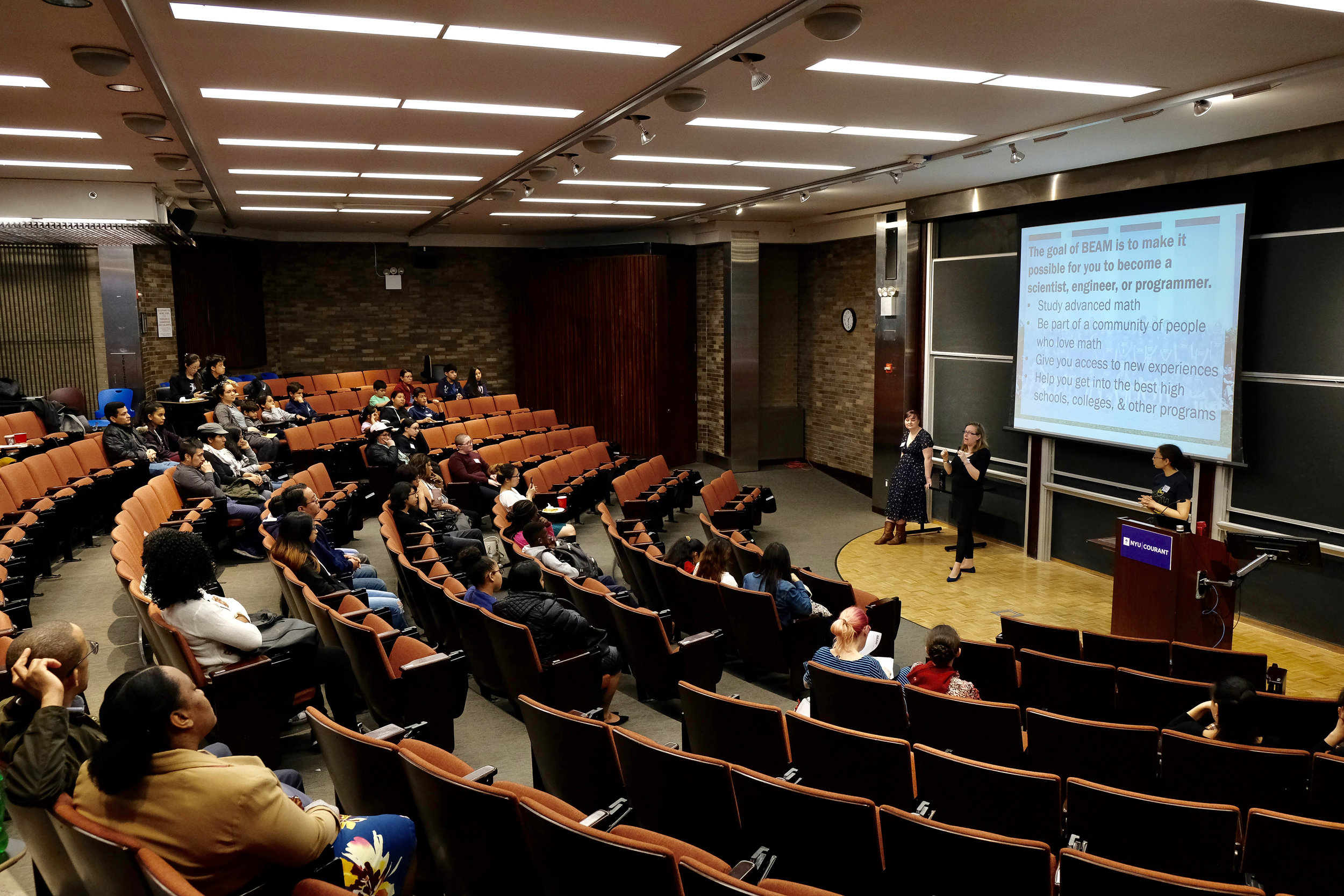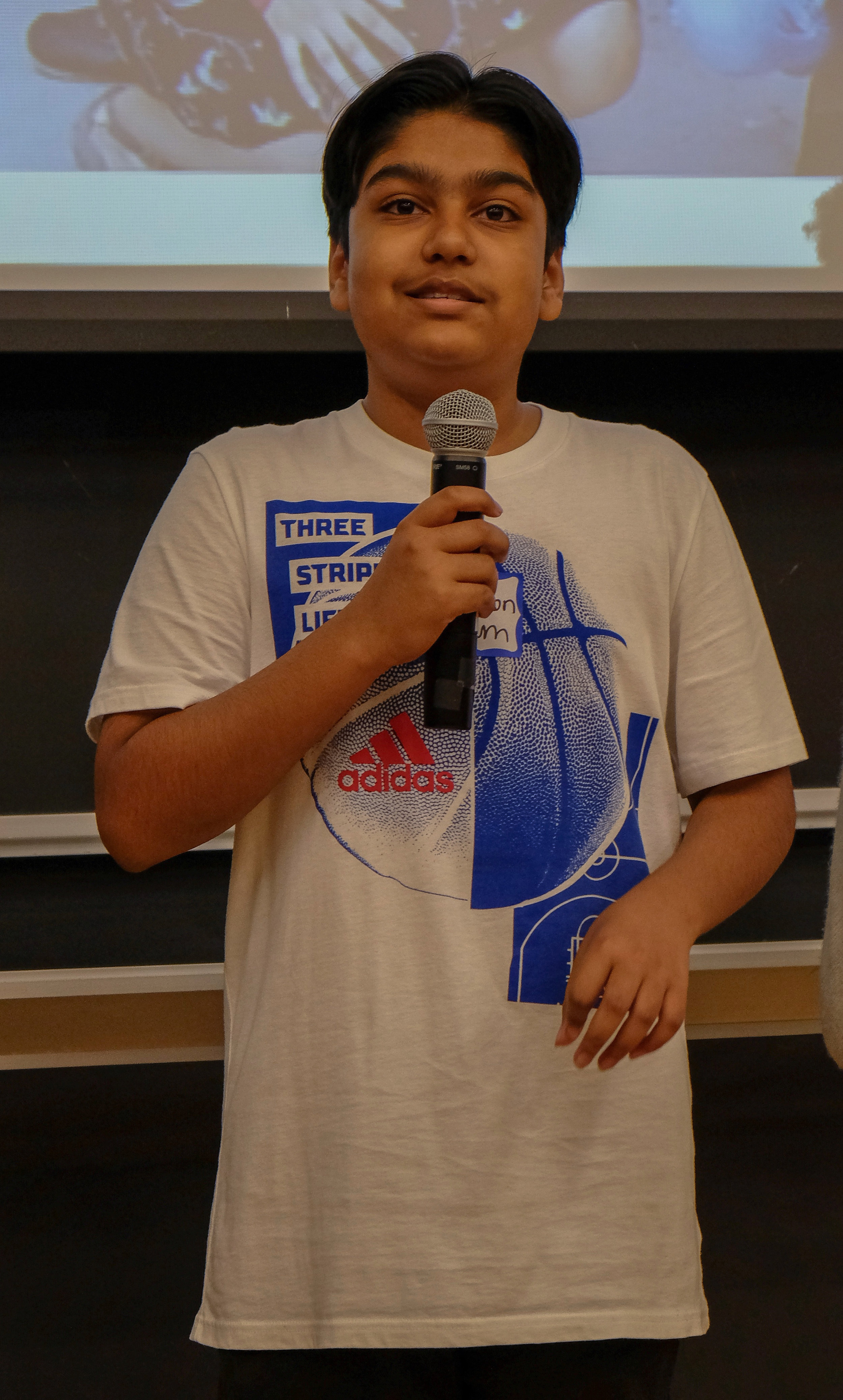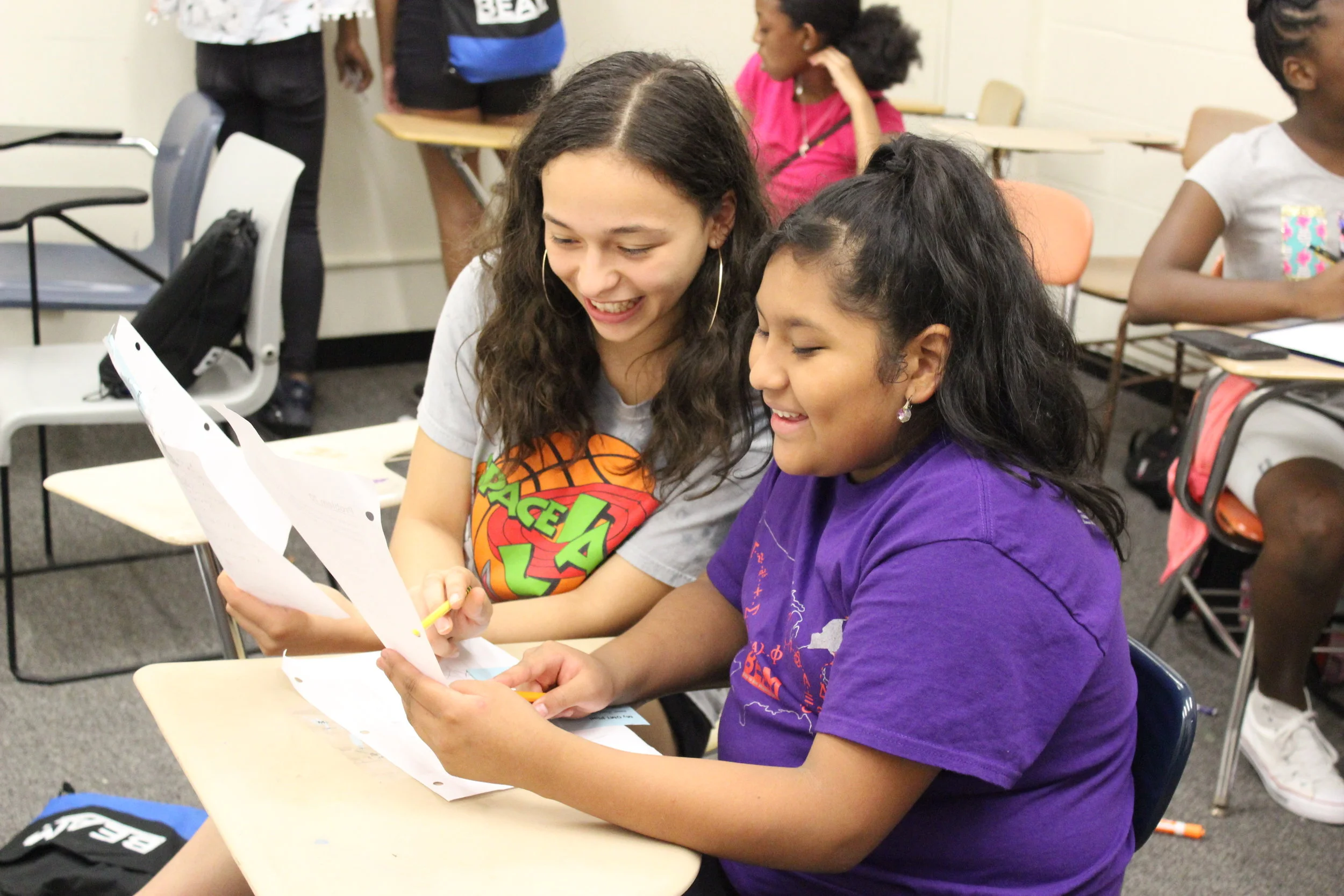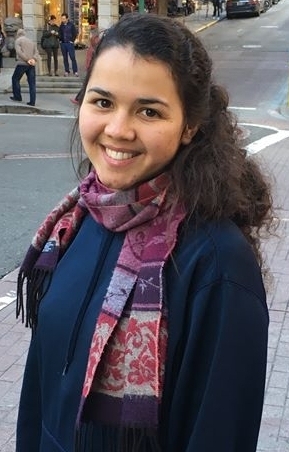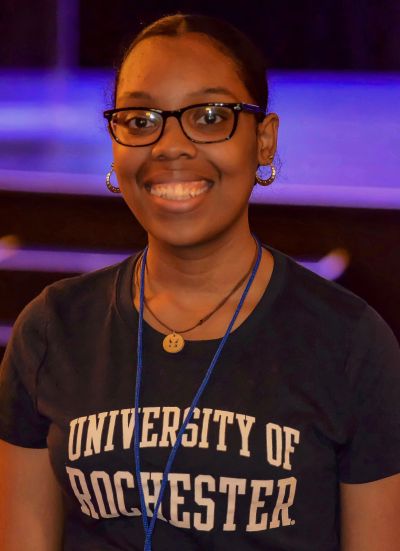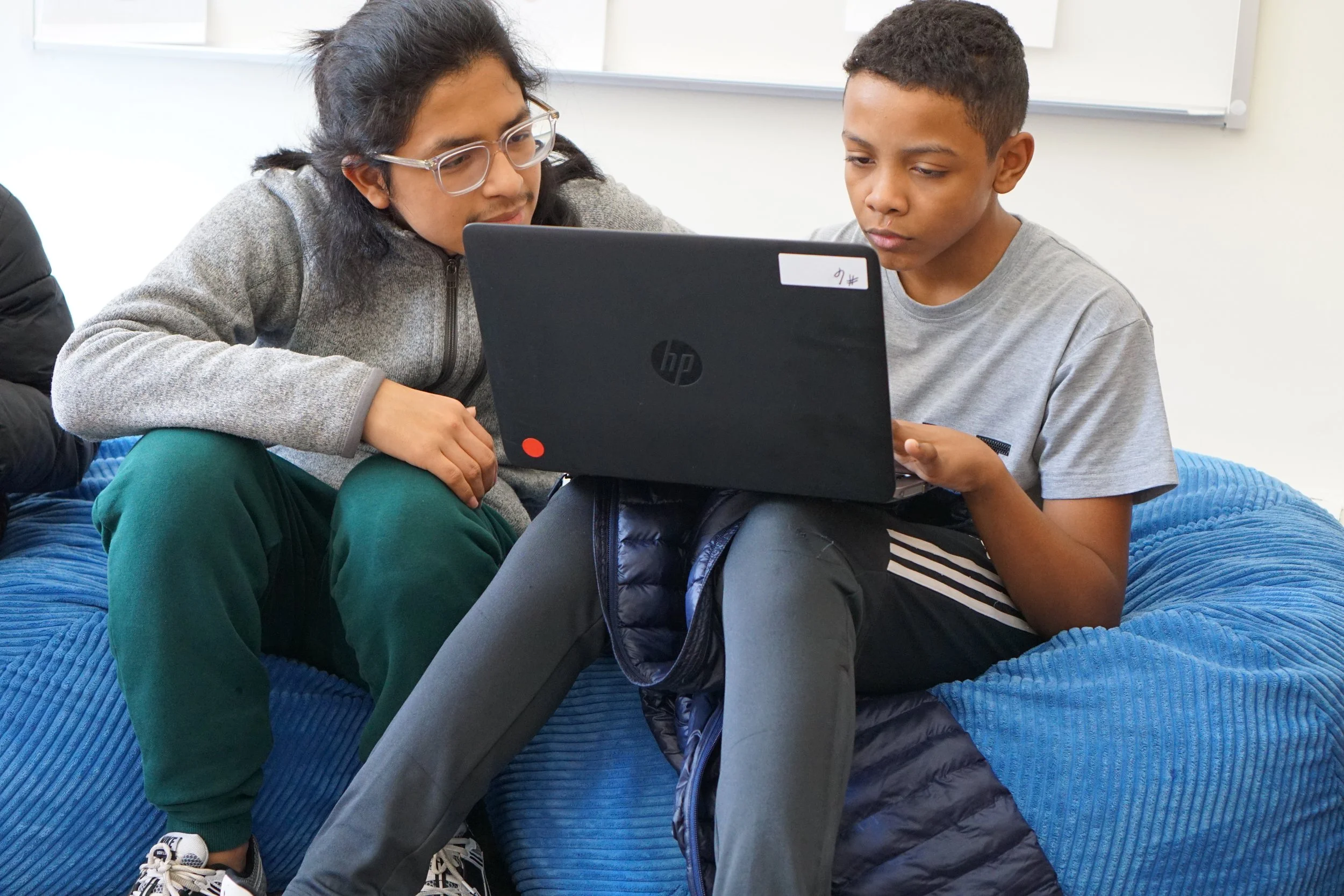
Welcome to the BEAM Blog!
Happy First Week of School to our BEAM New York High School Freshmen!
With students heading back to school campuses this past week, BEAM is reflecting on the success of our rising high school freshman class in New York. We’re so proud of the achievements of these students:
64% received offers from high schools that we rank as “Tier 1”; these schools offer AP calculus or an equivalent and more than 85% of graduates are college ready — fewer than 10% of schools qualify;
90% received offers from “Trusted” schools with good course offerings and support;
12 students were admitted to specialized high schools including Brooklyn Latin; Brooklyn Technical High School; High School for Math, Science, and Engineering; and Stuyvesant.
With students heading back to school campuses this past week, BEAM is reflecting on the success of our rising high school freshman class in New York. We’re so proud of the achievements of these students:
Admissions results:
64% received offers from high schools that we rank as “Tier 1”; these schools offer AP calculus or an equivalent and more than 85% of graduates are college ready — fewer than 10% of schools qualify;
90% received offers from “Trusted” schools with good course offerings and support;
12 students were admitted to specialized high schools including Brooklyn Latin; Brooklyn Technical High School; High School for Math, Science, and Engineering; and Stuyvesant.
BEAM works closely with each individual student as they navigate the complex path of choosing the best high school to fit their needs. Our goal is for every student to find a “strong-fit” high school; a school that provides high-quality classes and advanced math classes (especially calculus) as well as plenty of support and college counseling.
In New York City, all 8th graders must apply to high school. Since most schools do not offer advanced STEM coursework — fewer than half of schools offer calculus or even precalculus — the school a student attends determines a lot about what opportunities they will have. BEAM works one-on-one with students and families to ensure they can navigate the application process successfully, which helps keep students on-track to pursue STEM degrees and careers. For students who are interested in going to a specialized high school, we offer classes to prepare for the exams that determine admission. We also provide office hours where students can get help writing application essays, assembling portfolios, scheduling interviews, and more.
Here’s a complete list of NEW YORK high school admissions for BEAM students:
A. Philip Randolph Campus High School
Academy for Software Engineering (3)
Aviation Career & Technical Education High School
Baruch College Campus High School
Beacon High School
Bard High School Early College Bronx (2)
Bard High School Early College Manhattan
Bard High School Early College Queens (2)
Bronx Center for Science and Mathematics
Brooklyn Collaborative Studies
Brooklyn College Academy
The Brooklyn Latin School
Brooklyn Technical High School (3)
City College Academy of the Arts
Franklin Delano Roosevelt High School
George Westinghouse Career and Technical Education
Gotham Tech High School
High School for Construction Trades, Engineering, and Architecture
High School for Environmental Studies
High School for Mathematics, Science, and Engineering at City College
John Browne High School
Knowledge and Power Preparatory Academy International
Manhattan Center for Science and Mathematics (4)
Manhattan Village Academy (2)
Midwood High School (2)
Park East High School (2)
Queens Gateway to Health Sciences Secondary School
Staten Island Technical High School
Stuyvesant High School
Susan E. Wagner High School
University Heights - STEM Program
Washington Heights Expeditionary Learning School
Williamsburg High School for Architecture and Design
We’re overjoyed to share these incredibly strong results and are so proud of our BEAM students.
Congratulations BEAM NYC 9th Graders!
Each year, New York City’s rising freshman apply to high school, and last year was a year unlike any other.
The high school admissions process in New York City marks a pivotal step in students’ academic careers. Unlike in most other school districts, all New York City public school students must apply to high school. What school a student attends determines a lot about what opportunities they will have, including opportunities to study advanced math and science that will prepare them to study STEM in college. Consider, for example, that most high schools in New York City don’t offer precalculus, much less calculus. BEAM works with students and families to ensure that students can successfully navigate the application process and apply to high schools with strong course offerings and good support, which open the most doors to a successful STEM career.
Each year, New York City’s rising freshman apply to high school, and last year was a year unlike any other.
The high school admissions process in New York City marks a pivotal step in students’ academic careers. Unlike in most other school districts, all New York City public school students must apply to high school. What school a student attends determines a lot about what opportunities they will have, including opportunities to study advanced math and science that will prepare them to study STEM in college. Consider, for example, that most high schools in New York City don’t offer precalculus, much less calculus. BEAM works with students and families to ensure that students can successfully navigate the application process and apply to high schools with strong course offerings and good support, which open the most doors to a successful STEM career.
The admissions process in 2021-2022 continued to be affected by the pandemic, with changes to admissions criteria and timelines creating another year of bureaucratic confusion in the New York City public school system. Many middle schools, especially under-resourced schools still grappling with the effects of virtual schooling, were unable to provide the individualized admissions support students and families needed.
BEAM worked with our 8th graders to ensure that students and families had access to the information and advice they needed, including updated deadlines and requirements. BEAM also offered admissions office hours, where students could seek additional virtual support on applications and essays.
With BEAM’s help, our 8th graders earned admission to great high schools in the spring, including Bard High School Early College and Beacon High School! Eighteen students were admitted to specialized high schools, including Stuyvesant High School and Bronx High School of Science.
Admissions results:
50% of BEAM 9th graders are attending schools that BEAM ranks as Tier 1*
72% of students are attending schools that BEAM considers Trusted+**
18 students were admitted to specialized high schools, including Brooklyn Technical High School, Stuyvesant High School, and Bronx High School of Science.
* Tier 1 high schools offer Advanced Placement calculus or its equivalent (like the opportunity to take a college-level math course), and more than 85% of graduates are prepared for college. BEAM counts only about 40 high schools citywide, or about 7% of New York City high schools, as Tier 1; all are highly selective for admissions.
** Trusted Schools have good course offerings and support. Trusted+ Schools have earned this status with BEAM, or higher.
Way to go BEAM 9th Graders!
Here’s a complete list of high schools admissions for BEAM students:
University Neighborhood High School
Urban Assembly School for Criminal Justice
Urban Assembly School for Applied Math and Science
Pace High School
High School of Economics and Finance (3)
High School for Service & Learning at Erasmus
Francis Lewis High School
The High School of Fashion Industries
Medgar Evers College Preparatory School
East Side
Benjamin Banneker Academy
Academy for Careers in Television and Film
University Heights Secondary School
NYC iSchool
NYC Museum School
Millennium Brooklyn HS (2)
Manhattan Center for Science and Mathematics
Leon M. Goldstein High School for the Sciences
High School for Dual Language and Asian Studies
Bard High School Early College Queens (3)
Beacon High School (3)
Academy of Finance and Enterprise
Academy of American Studies (2)
Urban Assembly Media High School
The College Academy
The Boerum Hill School for International Studies
New Visions Charter High School for Advanced Math
Midwood High School
KIPP NYC College Prep High School
High CSchool for Health Professions and Human Services (2)
Harlem Village Academy Leadership Charter School
Frederick Douglass Academy
East West School of International Studies
DeWitt Clinton High School (2)
Coney Island Prep
Celia Cruz Bronx High School of Music
A School Without Walls
Academy for College Preparation and Career Exploration
Immaculate Conception School
Specialized High School Admissions included:
Stuyvesant High School (3)
The Brooklyn Latin School (3)
High School for Mathematics, Science and Engineering at City College (3)
Brooklyn Technical High School (6)
Bronx High School of Science
Queens High School for the Sciences at York College
Fiorello H. LaGuardia High School of Music and Art
We’re so proud of our 9th graders, and wish them all the best this academic year. We’re here for you!
BEAM Pathway Program Family Lunch
On Saturday, May 4th we welcomed newly admitted BEAM Pathway Program students to the program with our annual Family Welcome Lunch. Students and their families got the chance to meet the BEAM full time and summer staff, other admitted students and learn more about what to expect at a summer away on a college campus. Additionally, we invited BEAM alumni and parents to come share their experience during the summer. Check out some pictures from the event below:
If you missed out on a chance to attend the lunch or are interested in the presentation. Check out the video below:
4 for 15: An hour of class at BEAM 6 Uptown
This month, we're welcoming three new full-time staff to BEAM! One of them, Alyssa Loving Jung, is BEAM's new Development and Communications Coordinator. She spent her first week at BEAM visiting BEAM 6 and wrote this blog post about her experience. Welcome to the team, Alyssa!
----
My goal is to sit in on four of BEAM 6 Uptownʻs math classes in a single hour. While I may have an advanced degree in mathematics (a Master's to be precise), it is an ambitious plan. I am eager to see what mathematics the BEAM 6 students will be tackling today.
----
To start off, I get to join the very beginning of a class that appears to be about exponents… or maybe number theory? I am not quite sure. On the board there is a question that immediately catches my eye.
What is the ones digit of 569,423^22?
I can't help it. I immediately start scribbling work in my notebook trying to solve the question. But as discussion swirls around me, I am pulled away from my attempts to solve the problem, curious as to what the students are coming up with. Students wonder out loud how to deal with a problem like this without doing a dizzying degree of multiplication. The instructor, Juan, offers a friendly warning that such an approach would take much more time than they have in class. Returning to my page of notes, I gather from my own work that the key to the problem lies in spotting a pattern and not getting lost in the cumbersome calculations.
Emily works during class.
Around me, I can hear students closing in on the pattern, and it is such fun that I must force myself to remember that I only have 15 minutes at most with them before I have to head to the next class.
Even before my time is up, one of the students is up at the board presenting an idea.
Collaborative mathematics, the courage to expose a budding solution, a still green idea, to an entire class of peers, is a crucial element of pursuing advanced mathematics. I am delighted that BEAM students are engaging with each other and their faculty like this. But glancing at the clock, I must tear myself away and head to the next class.
----
Here there is a very different sort of picture on the board.
There are intersecting circles drawn and numbers scattered about. A student is at the board placing a number with care. While the numbers seem haphazardly distributed at first, the thoughtfulness of the student is the first clue that something more is going on. Then I notice the labels: factors of 6, multiples of 6, primes.
They are exploring logic. The strange picture on the board I recognize as a Venn Diagram, a way to visualize the overlap and interplay between different sets.
They move on from the Venn Diagram on the board to start working on a sheet of problems. A student notices ambiguity in one of the problems. The problem asks them to explore the statement "not A or B". He wonders if the instructor, Sian, means "(not A) or B" or rather "not (A or B)".
The whole class takes time to investigate this subtlety. The process reminds me of writing math proofs during graduate school. Oftentimes the tiniest turn of phrase, the most minute missing detail, can make or break a complex mathematical argument. I am excited to see that the students are taking such care with the reading and writing of mathematics. But it is time for me to move on to my third class.
TA Amaya works with student Karen on a problem set during Open Math Time.
----
Yorlan works on an advanced geoemetry problem.
This class says Geometry and Logic in the corner of the chalkboard at the front. Apparently, it is another class on logic, but now there is geometry thrown into the mix. I am intrigued.
The instructor, Xavier, is energetic and he calls each student by name as he peppers the room with questions.
He wonders how we can figure out what c is when we know c^2=8. A student calls out that c is the square root of 8.
Xavier follows up, smiling, to see if Eduardo was just guessing, but no:
"No, I didn’t guess..." Eduardo responds, "It's 'cause taking the square root is the opposite of squaring something."
I am impressed that in one sentence Eduardo has gotten at the heart of what mathematicians mean by inverse equations. It is a concept that can confound even college students. But I can’t stay for more insights today.
----
I am off to my final class. As I slip into my seat, I am startled to see scrawled across the board: "Are there Aliens in the Milky Way?"
A massive equation containing many letters is sprawled somewhere beneath it. The students are clearly in the process of grappling with the equation and what it means. The instructor, Susan, asks them to replace L = (1/10)^8 in their previous calculation, with L = (1/10)^2. Immediately, diligent pencil-scratching begins, heads bent, eyebrows furrowed with concentration.
This is what I call the "dirty work" of mathematics. Complex computations don’t encompass what mathematicians do. Mathematicians are much more than mere human calculators after all. But such calculations do form an important aspect of the job of many mathematicians and scientists. BEAM students in this class are building the patience and the stamina to handle even very complex formulas, and learning some mind-boggling astronomy at the same time.
Taro, a TA, observes Jamal as he contemplates a large numbers.
Meanwhile, I have set a new personal record for how many classes I have attended in one hour, and better yet I have had the chance to think about some really cool math. I cannot wait for what the next hour of BEAM 6 has in store!
----
Curious about the classes that Alyssa visited? BEAM 6 students all take classes in our four topic areas: Math Fundamentals, Logic, Math Team Strategies, and Applied Math. Within each topic, students get to choose from a menu of classes, so they each take a class that inspires their curiosity. In the mornings, when Alyssa was visiting classes, students were in either their Math Fundamentals class, which explores the why of elementary math, or Logic class, which focuses on how to justify your reasoning. Juan and Susan were each teaching Math Fundamentals courses, while Sian and Xavier teach courses in the Logic track.
Here are the full course descriptions for the four classes she visited!
Exponents: The Super-Powers of Numbers! (Juan)
Using the power of multiplication, we will build some really, really big numbers and compare them to see which ones will turn out to be the biggest. We'll also explore a strange planet which only has 11 numbers in it!
Cryptarithms and Other Arithmetic Puzzles (Sian)
If A + B = AC, then what is A + B + C? Cryptarithms are math puzzles where the arithmetic is simple but the "thinking part" of the puzzle is challenging. We will start with simple problems and build up a tool chest of logic strategies for solving these problems and all math problems.
Geometry and Logic (Xavier)
Ever look at a problem and not know where to start? This class will develop your ability to solve complex problems. We will learn how seemingly incomplete information can be combined to form complete solutions.
Big numbers, Small numbers, and In between (Susan)
Imagine you have a very long number line, with every number you’ve discussed this year in school on the number line. A new number is introduced. Where does it go? Are you sure? In this class, we will use a variety of tools (brain power, rulers, logic, and more) to identify the big numbers, the small numbers, and the ones in between.
Advice for Your First Summer at BEAM
Recently, we sat down with some of our older BEAM students to ask them what advice they would give to new students entering BEAM for the first time. Here's what they had to say!
Zavier at All Star Code, 2015.
Zavier just finished his sophomore year at SUNY Albany where he has declared a major in computer science and a minor in art. He was a member of BEAM's first ever summer cohort: 2011. He was a Junior Counselor at BEAM 6's first summer (2016) and became of the first two BEAM alumni to work for us as full Counselors in 2017 (counselors must have completed a year of college). In 2018, he's flying to Los Angeles to staff the first summer of BEAM 6 LA. Beyond BEAM, Zavier was a member of the first ever cohort at All Star Code and he has extensive experience in coding, maker spaces, and teaching tech skills. Lots of firsts for Zavier!
What should students expect from BEAM?
Students should expect to be encouraged to learn and be challenged by the questions they're given. They should expect to have people around them willing to help them through problems whether those problems have to do with math or not. Most importantly, students should expect to have a good time. BEAM is where I met some of the good friends I have today and I still look back on that summer remembering some of the fun times that I had.
Zavier plays tennis at BEAM 7 in 2011.
What advice would you give to a student starting BEAM?
The advice that I would give to a student starting BEAM is: don't feel discouraged by hard problems and don't be afraid to ask for help. BEAM helped me realize that as we grow, things become more difficult and problems seem to require more thought. Practicing patience and deeper thinking is all part of the process.
Why do you keep coming back to BEAM?
I keep coming back to BEAM because of the supportive staff. BEAM has opened the door to a lot of opportunities for me. They helped me when I was applying to high schools, they helped me when I was looking for summer programs, they helped me apply to college, and they even helped me find a job. It feels good to know that I have people who are always willing to help me out and it motivates me to do my best!
Zavier teaches Javascript to Elvis at BEAM 6 in 2017.
Tanasia at College Decision Day, 2018
Tanasia, 12th grade, will be attending the University of Rochester in the fall where she plans to major in math. She has spent three summers at BEAM, as a 7th grade student in 2013, and then as a Junior Counselor at BEAM 6 in 2016 and 2017. During the school year, she coaches two math teams at BEAM partner middle schools, including one at her own alma mater!
What should students expect from BEAM?
The math will be difficult; you won't get it right away. You might even struggle for the first two weeks! But you'll expand how you look at math. You'll make friendships and connections that will last for a long time. It's a new, fun experience.
What advice would you give to a student starting BEAM?
Don't be afraid to ask the staff for help! Also: even with math, the counselors don't know everything. That's normal in math, not to know everything.
Why do you keep coming back to BEAM?
I love to see where the students start and where they end. They evolve as mathematicians and they can solve problems they couldn't do before. It's amazing.
Tanasia plays chess with Jack, BEAM 6 (2016)
John showing his school pride!
John just finished his freshman year at Fordham University, where he plans to declare a major in chemistry. He is also taking pre-med coursework and aims to be a surgeon. John attended Bard High School Early College and graduated with both a high school diploma and an Associate's Degree. He attended BEAM 7 in 2012, and has contributed to BEAM in so many ways since! He was a junior counselor at BEAM 6 in 2016 and 2017, he is the TA for our 8th grade Algebra class, and he works in the BEAM office as an part-time assistant during the school year. In summer 2018, he and two friends who also attended BEAM 7 in 2012 (Joel and Quentin), will be counselors at BEAM 7 Bard College. They are the first BEAM alumni to go back as staff to the exact same program they attended as students!
What should students expect from BEAM?
I was expecting math all day and not much fun. But you should expect to be in a community of math lovers. For me, the community was the thing. I enjoyed being in a space where everyone loved math, shared my interests. Expect to be in a loving, math community. Expect to be challenged. Expect to make amazing friends you'll keep for a century. Expect to have fun: trips are amazing, the food is good, activities. It's not just math all the time; it's something immersive.
What advice would you give to a student starting BEAM?
Keep an open mind. It may seem tedious to lose your summer, but you'll have fun. I was afraid the first day. So, be open. Step a little outside your comfort zone. Those might be your friends for the rest of your life.
Quentin (left, red cap), John (next to him), and members of the BEAM 7 community in 2012 during a karaoke activity.
When you spent that first summer with us, did you ever think you would end up being such good friends with Quentin?
He came up to me. I don't remember what he said. But ever since then, we became friends, playing basketball. BEAM helped us stay friends because they introduced us to the same high school. So I've stayed friends with him ever since. Derek, too! I didn't get to know Derek much that summer, but we became friends during high school and we still talk.
Why do you keep coming back to BEAM?
Honestly? I want to stay part of a community that's so supportive, loves math. I want to give back. BEAM helped me move in the direction I'm moving in now. I want to influence the next generation as they figure out their path. It's an amazing program, amazing community that should continue to exist and I want to help that.
The BEAM 6 group photo from 2017! Quentin (white jacket) is in the front row and John is all the way in the back. Mona, Zavier, Tanasia, and Rashik are here, too: Mona is in the front, on the left, Zavier is wearing a black cap in the middle on the right, Tanasia is in the middle, near the back, and Rashik is in the center, left with a baseball cap on.
Crisleidy at the Moth City Slam, spring 2018.
Crisleidy is graduating from Brooklyn Tech this June. She's taking a gap year next year, working at City Year (an Americorps program). During the year, she volunteers at BEAM Next, our program for 9th and 10th graders, teaching life skills (like study skills). This summer, she will be a Junior Counselor at BEAM 6 in NYC.
What should students expect from BEAM?
To step out of your comfort zone. There's a lot of new stuff. I didn't know any math, puzzle, logic games before the summer and then I got really into them.
What advice would you give to a student starting BEAM?
Learn how to play chess! There's people at the program who know and they'll teach you. Try everything once! There might be something you enjoy. But you don't have to try anything you're not comfortable with.
Why do you keep coming back to BEAM?
It's fun. I love the people. A nice community, a family. I can't get enough! Plus, I appreciate all the help I've gotten.
Crisleidy plays her favorite board game, Ricochet Robots, at BEAM 7 in 2013.
Rashik, volunteer math grading in 2018.
Rashik is an 11th grader at Bard High School Early College, which means he's currently dual-enrolled in "Year 1", the first year of his Associate's Degree. Rashik attended BEAM 7 in 2014. He was a Junior Counselor in 2017 and will be returning to that role in summer 2018. During the school year, he coaches math teams at two BEAM partner middle schools.
What should students expect from BEAM?
I think students should expect it to be an uncomfortable environment at first but once they're in the flow of things they'll love what they're learning and that they're surrounded by people that who also love what they're learning. Also, students should expect work they've never seen before: they may be confused by it, or it might take them longer than their normal math questions.
Rashik presents the solution to a challenge problem at BEAM 7 in 2014.
What advice would you give to a student starting BEAM?
The most important advice I'd give is that you have to persevere and keep working even when it gets really frustrating. There's no feeling worse than being stuck on a problem forever, but there's also no feeling better than finally solving that problem. In terms of social advice, I'd tell the kids to be themselves. There are other amazing kids at BEAM, so be brave and try to make new friends and have new experiences.
Why do you keep coming back to BEAM?
I keep coming back to BEAM partly because I made some amazing friends and that small circle still exists today. But also because the open environment that BEAM has established makes me always feel welcomed; I feel like I can go to them for any problem. I always feel like I have a community outside of school or home that I can go to for help. Plus, BEAM also takes me to Yale every year which is pretty cool.
Rashik, Eli, Tanasia, and Andy in January 2018 at our MATHCOUNTS prep event. All four of these high school students coach math teams at our partner middle schools!
Mona at BEAM College Day, fall 2016.
Mona is graduating from the Academy for Software Engineering this June. She'll be attending Barnard College as a HEOP Scholar this fall. She plans to major in mathematics with a computer science concentration. During the year, Mona is the TA for BEAM's Saturday programming class (for 9th and 10th graders). She was also been a Junior Counselor at BEAM 6 in 2017.
What should students expect from BEAM?
To have a lot of fun. Honestly. You might not expect that. Maybe your parents pushed you to do it. But it's not like school, it's fun. At the same time, expect it to be challenging.
What advice would you give to a student starting BEAM?
Be open minded. Lots of activities you might not be sure about. Don't say: I'm not good at this, I don't want to try it. Check it out!
Why do you keep coming back to BEAM?
It's a family! It's relationships. The people are easy to talk to, they make you feel comfortable. That sounds cheesy but it's true.
Mona (front) with a dozen BEAM students at our annual Slightly Mathy Trivia Night, fall 2017. Crisleidy, John, and Rashik are also pictured!





